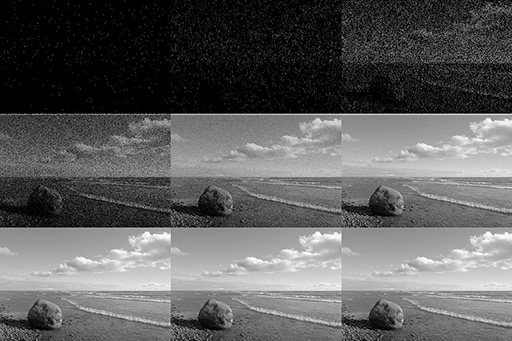3 Measurements and uncertainty: why great distances are bad news
When you looked at the transmission spectrum of HD 209458 b in Section 2.4, you’ll have noticed that the measurements of each colour were shown with an uncertainty. This uncertainty is sometimes called the ‘experimental error’, though this doesn’t mean there was a mistake in the measurement. It is very important for measurements in all branches of science to carefully specify the range of possible values the measurement indicates. When you use a ruler to measure something, you can probably only make a reading to the nearest millimetre or so. If you use a ruler to measure a line which is exactly 13.163 cm long, you might record a value of 13.2 cm, or if you are very careful and have good eyesight you might record a value of 13.15 cm. Your value has an uncertainty of about 0.05 cm, and experimenters would record it as (13.15 ± 0.05) cm. This gives the value and an indication that the experimenter’s uncertainty range is from 13.10 cm to 13.20 cm. Rather than meaning that scientists don’t know the answer, it’s a way of showing how confident they are in the measurement they have made. You might think that it is obvious that the uncertainty in a length measurement is about this much, but it depends entirely on how you make the measurement. If you use specialised equipment, it is possible to make much more precise measurements, so the uncertainty range is a very important part of the measurement value.
The uncertainty of the measurements made by astronomers comes from a range of sources. There is a fundamental limit to how precisely astronomers can measure the properties of anything they observe. This limit arises from the properties of light. Light is transmitted as individual wave packets known as ‘photons’. When these photons are captured by a research telescope they are counted by a detector. The more of these packets of light that are detected, the more certain scientists can be about their measurement – but if there are few packets of light in the signal, the measurement can start to look very uncertain. Scientists call this unavoidable uncertainty ‘noise’. Figure 15 shows the effect of noise in photographs – the less light that is collected the less sharp and clear the picture is. Generally the effects of noise can be minimised by collecting more and more photons from the source being studied.
This fact is very important when astronomers want to make measurements, because more light (and therefore more individual light packets, i.e. photons) is received from closer stars than from stars that are further away. A candle seems quite bright when you are close to it, but if it is 100 metres away it seems dim. So when astronomers are trying to make precise measurements of a planet’s atmosphere, it’s much easier if the star is nearby. That’s why we still know so little about most of the many planets discovered by the Kepler spacecraft: they are simply too far away. This is one of the reasons why astronomers get particularly excited about discovering exoplanets orbiting nearby stars. The closer the planet, the more light astronomers should be able to collect. More light allows for more detailed measurements of the planet’s properties. For nearby planetary systems, these measurements should have relatively small uncertainties.

